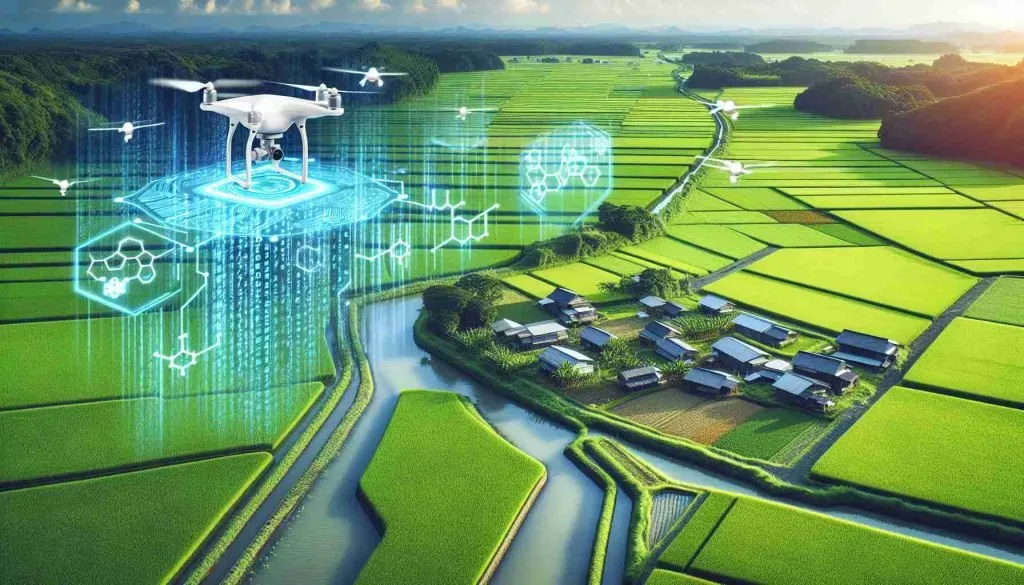In the heart of Japan, researchers are pioneering a method that could revolutionize how we monitor rice growth and predict yields, with implications that stretch far beyond the paddy fields. Shota Fukuda, a scientist at Nagoya University’s Department of Plant Production Sciences, has led a study that introduces a non-destructive way to estimate the leaf area index (LAI) of rice canopies using the ratio of near-infrared to photosynthetically active radiation (NIR/PAR). This method, published in the journal ‘Discover Agriculture’ (which translates to ‘農業の発見’ in Japanese), promises to enhance growth assessment, yield prediction, and the development of smart agriculture technologies.
The leaf area index, a critical metric in agriculture, measures the leaf area per unit ground area. Accurate LAI estimation is vital for monitoring plant growth and predicting yields, but traditional methods often involve destructive sampling or expensive equipment. Fukuda’s team has developed a method that uses the ratio of NIR to PAR transmitted through the rice canopy, offering a non-destructive and potentially more accessible alternative.
The study tested the NIR/PAR method on four rice cultivars with diverse leaf characteristics and plant architectures. The results were promising. “The NIR/PAR method accurately estimated LAI across all cultivars, regardless of their leaf characteristics or plant architecture,” Fukuda explains. This robustness is a significant advantage, as it means the method can be applied broadly across different rice varieties.
Moreover, the NIR/PAR method proved accurate even in dense canopies, where conventional plant canopy analyzers tend to underestimate LAI. This is a game-changer for farmers and agronomists, as dense canopies are common in high-yielding rice crops. “Our findings demonstrate the robustness and accuracy of the NIR/PAR method for rice LAI estimation,” Fukuda states, highlighting the potential of this method to improve growth assessment and yield prediction.
The implications of this research extend beyond rice cultivation. In the energy sector, accurate LAI estimation can enhance bioenergy crop monitoring and management. Bioenergy crops, such as switchgrass and miscanthus, are often grown in dense stands, making accurate LAI estimation challenging. The NIR/PAR method could provide a solution, enabling more precise monitoring of these crops and improving bioenergy yield predictions.
Furthermore, the non-destructive nature of the NIR/PAR method aligns with the growing trend towards sustainable and precision agriculture. By reducing the need for destructive sampling, this method can help minimize crop damage and reduce labor costs. It also opens the door for real-time, in-season monitoring of crops, enabling farmers to make timely decisions and optimize yields.
As we look to the future, the NIR/PAR method could play a pivotal role in developing smart agriculture technologies. By integrating this method with remote sensing technologies, such as drones and satellites, we could enable large-scale, real-time monitoring of crops. This would not only improve yield predictions but also enhance our ability to respond to environmental changes and optimize resource use.
In conclusion, Fukuda’s research presents a significant advancement in the field of agriculture. The NIR/PAR method offers a robust, accurate, and non-destructive way to estimate LAI, with implications that stretch from rice paddies to bioenergy crops. As we strive towards sustainable and smart agriculture, this method could be a key tool in our arsenal. The journey towards precision agriculture is underway, and the NIR/PAR method is a significant milestone along the way.

